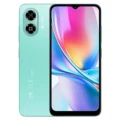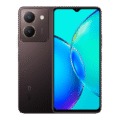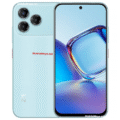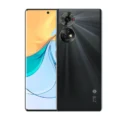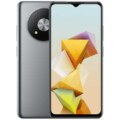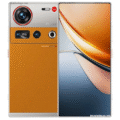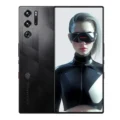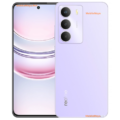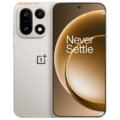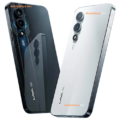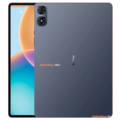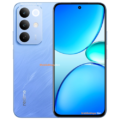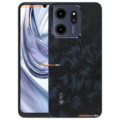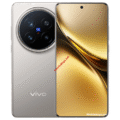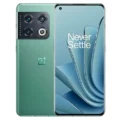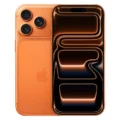Price List: Under Tk.5,000 | Tk.5001-10000 | Tk.10001-15000 | Tk.15001-20000 | Tk.20001-30000 | Tk.30001-40000 | More Mobiles
- Home
- All Mobile
- ZTE
- ZTE Nubia Z80 Ultra
ZTE Nubia Z80 Ultra
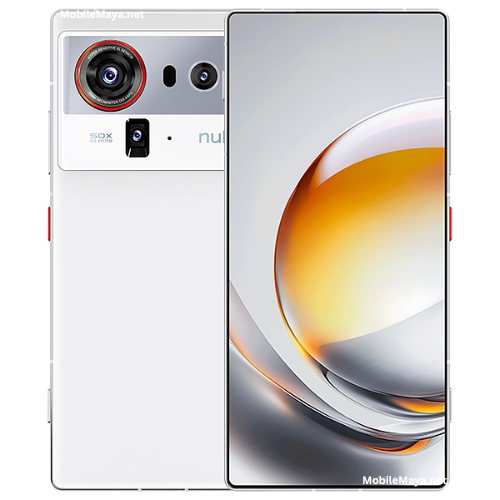

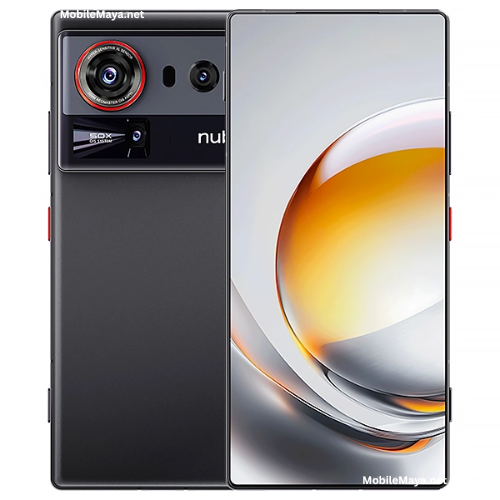
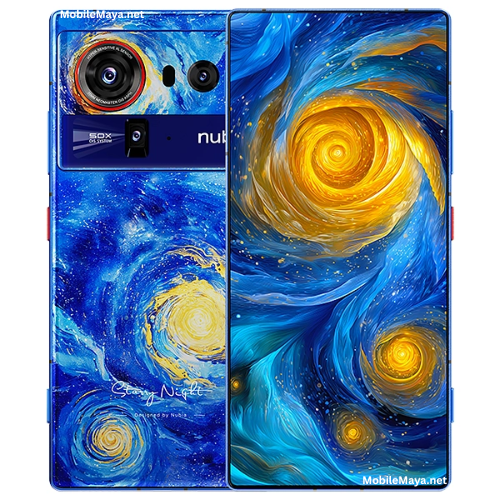
Specifications
Price in Bangladesh
| Expected Price | ৳90,000 |
General
| Device Type | Smartphone |
| Model | NX741J |
| Announced | October, 2025 |
| Released | December, 2025 |
| Status | Available |
Hardware & Software
| Operating System OS => Every computer system run on a base software called Operating System (OS). Operating System controls all basic operations of the computer (such as smartphone, PDAs, tablet computers and other handheld devices). The Operating System allows the user to install and run third party applications (apps), apps are used to add new functionality to the device. | Android |
| OS Version | v16 |
| User Interface UI or user interface of a device is the look and feel of the on-screen menu system. How it works, its color scheme, how it responds to button presses, all of these things are part of the user interface. | Nebula AIOS 2 |
| Chipset Chipset is a group of integrated circuits designed to perform one or a more dedicated functions, often with real time computing constraints, Popular smartphones are equipped with more advanced embedded chipsets that can do many different tasks depending on their programming. | Qualcomm SM8850-AC Snapdragon 8 Elite Gen 5 (3 nm) |
| CPU CPU (Central Processing Unit) mostly known as processors, CPU processes instructions in order to carry out certain functions that make your device operate properly. Processors are often described as the brain of computers, smartphones and tablets, Smartphones and tablets rely on processors to carry out their every task, Processors are an incredibly important factor in selecting any type of computing device, including your smartphone. | Octa-core (2x4.6 GHz Oryon V3 Phoenix L + 6x3.62 GHz Oryon V3 Phoenix M) |
| GPU GPU (Graphics Processing Unit) is a single-chip processor designed to rapidly manipulate and alter memory to accelerate the creation of images in a frame buffer intended for output to a display, This includes things such as lighting effects, object transformations, and 3D motion. | Adreno 840 |
| RAM (Memory) RAM (Random Access Memory) is a type of computer memory that can be accessed randomly, any byte of memory can be accessed without touching the preceding bytes that allows information to be stored and accessed quickly from random locations. RAM is the most common type of memory found in computer systems, smartphones, tablets and other electronic devices. | 12 GB, 16 GB |
Design
| Dimensions | 164.5 x 77.2 x 8.6 mm (6.48 x 3.04 x 0.34 in) |
| Weight | 227 g (8.01 oz) |
| Colors |
Black, Silver, Starry Blue, Luo Tian Yi Red |
| Build Material | Glass front, aluminum frame, glass back |
Display
| Display Type Display Technology => A number of display technologies and types used in mobile phones => TFT (Thin Film Transistor), IPS (In-Place Switching), OLED (Organic Light Emitting Diode), AMOLED (Active-Matrix Organic Light-Emitting Diode), Super AMOLED (an even advanced version of AMOLED), Resistive Touchscreen (Resistive touchscreens contain two layer of conductive material with a very small gap between them which acts as a resistance), Capacitive Touchsceen (Capacitive touchscreen technology consists of a layer of glass coated with a transparent conductor) | AMOLED |
| Size | 6.85 inches, 113.7 cm2 (~89.5% screen-to-body ratio) |
| Resolution | 1216 x 2688 pixels (~431 ppi density) |
| Display Colors Display Colors is refers to the number of different shades of colors that the screen is capable of displaying => 64K colors, 256K colors and 16 million colors, Obviously 16M is highest available range of colors and better than others. | 1B colors |
| Brightness | 2000 nits (peak) |
| Refresh Rate | 144Hz |
| HDR 10 / HDR+ support |
Rear Camera
| Camera Setup | Triple |
| Main Camera | 50 MP, f/1.7, 35mm (standard), 1/1.3", 1.2µm, PDAF, OIS |
| Second Camera | 64 MP, f/2.5, 85mm (periscope telephoto), 1/2.0", 0.7µm, multi-directional PDAF (15cm - ∞), OIS, 3.3x optical zoom (vs. 26mm cam) |
| Third Camera | 50 MP, f/1.8, 18mm (ultrawide), 1/1.55", PDAF |
| OIS | |
| Flash Flash Light => There is commonly two types of flash lights are used in camera mobile phones, LED Flash (LED flash offers lower power consumption with drive circuitry that takes up very little room, LEDs can be strobed faster than any other light source), Xenon Flash (xenon flash produces an extremely intense full-spectrum white light for a very short duration) | dual-tone flash |
| Camera Features |
Laser AF, color spectrum sensor, Ring-LED, dual-tone flash, panorama, DSG HDR |
| Video | 8K@30fps, 4K@30/60/120fps, 1080p@30/60fps, gyro-EIS, HDR10, 10‑bit video |
Front Camera
| Camera Setup | Single |
| Secondary |
16 MP, f/2.0, 24mm (wide), 1/2.8", 1.12µm, under display |
| Camera Features | HDR |
| Video | 1080p@30fps |
Battery
| Battery Type Battery Type => Cell phones run on various kinds of batteries depending on the manufacturer, phone size or shape and features. There are basically four types of cell phone batteries => Lithium Polymer, Lithium Ion, Nickel Metal Hydride and Nickel Cadmium. | Li-Ion (Lithium Ion) |
| Placement | Non-removable |
| Capacity Battery Capacity is a measure (typically in Amp-hr) of the charge stored by the battery, and is determined by the mass of active material contained in the battery. The battery capacity represents the maximum amount of energy that can be extracted from the battery under certain conditions. | 7200 mAh |
| Wireless Charging Wireless Charging (Inductive Charging) uses an electromagnetic field to transfer energy between two objects. This is usually done with a charging station. Energy is sent through an inductive coupling to an electrical device, which can then use that energy to charge batteries or run the device. |
90W wired, PD3.0, QC4 80W wireless |
| USB Type-C | USB Type-C 3.2, OTG |
Storage
| Storage Type | UFS 4.1 |
| Storage Capacity | 512 GB, 1 TB |
| USB OTG |
Network
| 2G Network | GSM 850 / 900 / 1800 / 1900 |
| 3G Network | HSDPA 800 / 850 / 900 / 1700(AWS) / 1900 / 2100 |
| 4G Network | LTE |
| 5G Network | SA/NSA |
| SIM SIM (Subscriber Identity Module) is a small card that contains mobile network subscriber's account information. This allows the phone using the card to attach to a mobile network. The SIM card is most commonly associated with GSM and UMTS mobile networks. Moving a SIM card from one phone to another allows a subscriber to switch mobile phones without having to contact their mobile network carrier. SIM cards can also be used by a phone to store limited amounts of data, such as phone numbers and text messages. | Standard SIM |
Data
| GPRS GPRS (General Packet Radio Service) is a packet oriented mobile data service on the 2G and 3G cellular communication system's global system for mobile communications (GSM), Generally, GPRS is used for the purpose of wireless data transfer, such as sharing pictures and videos or browsing the Internet via a mobile phone connection. | |
| EDGE EDGE (Enhanced Data GSM Environment) is a wireless network technology generally considered the next step in the 2G network offers data transfer rates up to four times faster than ordinary GSM networks, Generally, EDGE is used for the purpose of wireless data transfer, such as sharing pictures and videos or browsing the Internet via a mobile phone connection. | |
| Speed | HSPA, LTE (CA), 5G |
| Web Browser Web Browser => a web browser is a software application used to locate, retrieve and display content on the World Wide Web, including Web pages, images, video and other files, The primary function of a web browser is to render HTML, the code used to design or markup webpages. | HTML5 |
Messaging
| SMS SMS (Short Messaging Service) is a text messaging service component of phone, Web, or mobile communication systems. It uses standardized communications protocols to allow mobile phone devices to exchange short text messages over the networks. | Yes |
| MMS MMS (Multimedia Messaging Service) is a standard way to send messages that include multimedia content (audio clips, video clips and images) to and from mobile phones over wireless networks using the WAP protocol. | |
| Email Email (Electronic Mail) is a system for receiving, sending, and storing electronic messages, Similar to a letter, email is text messages that may contain files, images, or other attachments sent via the internet to a recipient by using applications and software prograps. An email address is required to receive email, and that address is unique to the user. | Yes |
| IM IM (Instant Messaging) is an exchange of text messages through a software application, it enable you to create a kind of private chat room with another individual in order to communicate in real time over the Internet. | Yes |
Connectivity
| Bluetooth Bluetooth is a wireless communications technology for exchanging data between mobile phones, headsets, computers and other network devices over short distances without wires, Bluetooth technology was primarily designed to support simple wireless networking of personal consumer devices. | 5.4, A2DP, LE, aptX HD, aptX Adaptive, aptX Lossless |
| Wi-fi Wi-Fi is a popular wireless networking technology using radio waves to provide high-speed network connections that allows devices to communicate without cords or cables, Wi-Fi is increasingly becoming the preferred mode of internet connectivity all over the world. | Wi-Fi 802.11 a/b/g/n/ac/6e/7, dual-band, Wi-Fi Direct |
| Wi-fi Hotspot | |
| Infrared Infrared connectivity is an old wireless technology used to connect two electronic devices. It uses a beam of infrared light to transmit information and so requires direct line of sight and operates only at close range. | |
| USB | USB Type-C 3.2, OTG |
| GPS GPS The Global Positioning System is a satellite-based radio navigation system, GPS permits users to determine their position, velocity and the time 24 hours a day, in all weather, anywhere in the world, In order to locate your position, your device or GPS receiver must have a clear view of the sky. | GPS (L1+L2+L5), GLONASS (G1+G5), BDS (B1I+B1C+B2a+B2b), GALILEO (E1+E5a), QZSS (L1+L5) |
| NFC NFC (Near field communication) is a set of standards for smartphones and similar devices to establish peer-to-peer radio communications with each other by touching them together or bringing them into proximity, usually no more than a few inches. |
Media
| FM Radio | No |
| Loudspeaker | Yes, with stereo speakers |
| 3.5mm Jack | No |
Sensors & Security
| Fingerprint Sensor |
More
| Made By | China |
Performance Tests
PROS
- Excellent display with 144Hz refresh rate and HDR10+
- Flagship Snapdragon 8 Elite Gen 5 performance
- Massive 7200mAh battery with ultra-fast charging
- High-quality triple camera system
- Premium build and AI-enhanced software
CONS
- No 3.5mm headphone jack
- No expandable storage
- Slightly heavy at 227g
- FM Radio not supported
ZTE Nubia Z80 Ultra Price in Bangladesh
Expected Price: ৳90,000 (12GB/512GB variant, expected)
The ZTE Nubia Z80 Ultra is an upcoming flagship smartphone designed for performance enthusiasts and photography lovers alike. Featuring a stunning 6.85-inch AMOLED display with a 144Hz refresh rate, the device delivers an ultra-smooth visual experience. Powered by the Snapdragon 8 Elite Gen 5 chipset and up to 16GB RAM, it’s built to handle heavy gaming, multitasking, and demanding creative tasks effortlessly. Its triple rear camera system with a 64MP periscope telephoto lens and a massive 7200mAh battery makes it one of the most feature-rich premium devices expected in 2025.
Price & Variants
| RAM & Storage | Price (BDT) | Status |
|---|---|---|
| 12GB + 512GB | ৳90,000 (expected) | Coming Soon |
| 16GB + 1TB | To be announced | Coming Soon |
ZTE Nubia Z80 Ultra Specifications
The ZTE Nubia Z80 Ultra (model NX741J) represents the brand’s latest addition to its ultra-premium lineup. Built for flagship performance, it combines cutting-edge AI-driven photography, a top-tier display, and blazing-fast connectivity.
| Feature | Details |
|---|---|
| Model Name | ZTE Nubia Z80 Ultra |
| Release Date | October 2025 |
| Market Availability | Coming Soon |
| Official Price | ৳90,000 (expected) |
| RAM & Storage | 12GB/512GB, 16GB/1TB |
Display and Design
The Nubia Z80 Ultra sports a 6.85-inch AMOLED display with a crisp 1216 x 2688 pixel resolution, offering sharp visuals at 431 ppi density. Its 144Hz refresh rate and HDR10+ support ensure an incredibly fluid and immersive viewing experience, perfect for gaming and multimedia.
The display boasts 1 billion colors and a peak brightness of 2000 nits, making it excellent for outdoor visibility. The phone’s design exudes luxury, featuring a glass front and back with an aluminum frame. Available in Black, Silver, Starry Blue, and Luo Tian Yi Red, the device weighs 227g and measures 164.5 x 77.2 x 8.6 mm, offering a bold yet ergonomic feel.
Performance and Processor
At the core of the Nubia Z80 Ultra lies the Qualcomm Snapdragon 8 Elite Gen 5 (3nm) chipset, paired with an Adreno 840 GPU. Its octa-core CPU configuration — including 2x 4.6GHz Oryon V3 Phoenix L and 6x 3.62GHz Phoenix M cores — delivers exceptional power efficiency and raw speed.
The phone offers 12GB or 16GB of RAM and up to 1TB of UFS 4.1 storage, ensuring superfast data transfer and ample space for apps and media. Running on Android 16 with Nebula AIOS 2, it enhances multitasking, gaming, and app optimization through AI-powered resource management.
Camera and Video
The ZTE Nubia Z80 Ultra excels in photography, boasting a triple rear camera setup:
- 50MP (wide) – f/1.7, 35mm, 1/1.3″ sensor with OIS and PDAF
- 64MP (periscope telephoto) – f/2.5, 85mm lens, 3.3x optical zoom, OIS
- 50MP (ultrawide) – f/1.8, 18mm, 1/1.55″ sensor
The rear system includes laser autofocus, color spectrum sensor, and Ring-LED dual-tone flash, supporting up to 8K video at 30fps and 4K at 120fps with HDR10 and 10-bit video for cinematic content creation.
On the front, it features a 16MP under-display camera (f/2.0) that supports HDR and 1080p@30fps video recording—offering a seamless, notch-free display experience.
Battery and Charging
Powering the device is a massive 7200mAh battery, providing all-day endurance for gaming, video editing, and photography. It supports 90W wired charging (PD3.0, QC4) and 80W wireless charging, letting users top up quickly without downtime. The combination of AI battery optimization and the efficient 3nm processor ensures excellent battery life even under heavy use.
Connectivity and 5G Support
The Z80 Ultra supports dual SIM and a full spectrum of 2G, 3G, 4G, and 5G (SA/NSA) bands. Connectivity features include:
- Wi-Fi 7 (802.11 a/b/g/n/ac/6e/7)
- Bluetooth 5.4 with aptX HD, Adaptive, and Lossless audio support
- USB Type-C 3.2 with OTG
- NFC
- GPS (multi-band: GPS, GLONASS, BDS, GALILEO, QZSS)
This combination ensures ultra-fast data, smooth streaming, and seamless connectivity across devices.
Additional Features
The ZTE Nubia Z80 Ultra is packed with advanced sensors and features, including:
- Under-display fingerprint sensor
- Stereo speakers (no 3.5mm jack)
- AI-based face recognition
- Nebula AIOS 2 (based on Android 16)
- Premium glass-metal build
- High-fidelity audio experience
While it lacks FM radio, it compensates with top-tier multimedia capabilities and immersive stereo sound quality.
Reason to Buy
- Flagship Snapdragon 8 Elite Gen 5 processor for blazing-fast performance
- Stunning 144Hz AMOLED display with HDR10+
- Versatile triple-camera system with 8K video support
- Huge 7200mAh battery with 90W wired and 80W wireless charging
- Futuristic under-display front camera
- Premium glass-aluminum design with AIOS 2 software enhancements
Verdict
The ZTE Nubia Z80 Ultra stands as one of the most powerful and visually stunning flagship phones of 2025. With its blend of premium design, AI-driven software, top-tier camera hardware, and enormous battery life, it’s perfect for power users, gamers, and creators seeking an all-in-one performance device. At an expected price of around ৳90,000, it delivers excellent value compared to other ultra-premium models.
FAQ
Q1: What is the expected price of ZTE Nubia Z80 Ultra in Bangladesh?
A: The expected price is around ৳90,000 for the 12GB/512GB variant.
Q2: Does the ZTE Nubia Z80 Ultra support 5G?
A: Yes, it supports full 5G (SA/NSA) connectivity.
Q3: What is the battery capacity of this phone?
A: It comes with a large 7200mAh battery supporting 90W wired and 80W wireless charging.
Q4: What processor does it use?
A: The phone is powered by the Snapdragon 8 Elite Gen 5 (3nm) chipset.
Q5: Does it have expandable storage?
A: No, but it comes with up to 1TB UFS 4.1 internal storage.
Alternatives to ZTE Nubia Z80 Ultra
If you’re exploring similar flagship-level smartphones, consider these alternatives:
- Samsung Galaxy S25 Ultra
- Xiaomi 15 Ultra
- OnePlus 13 Pro
- ASUS ROG Phone 9 Ultimate
- Vivo iQOO 13 Pro
User Reviews
Disclaimer Note
We do not guarantee that the information of this page is 100% accurate and up to date.



